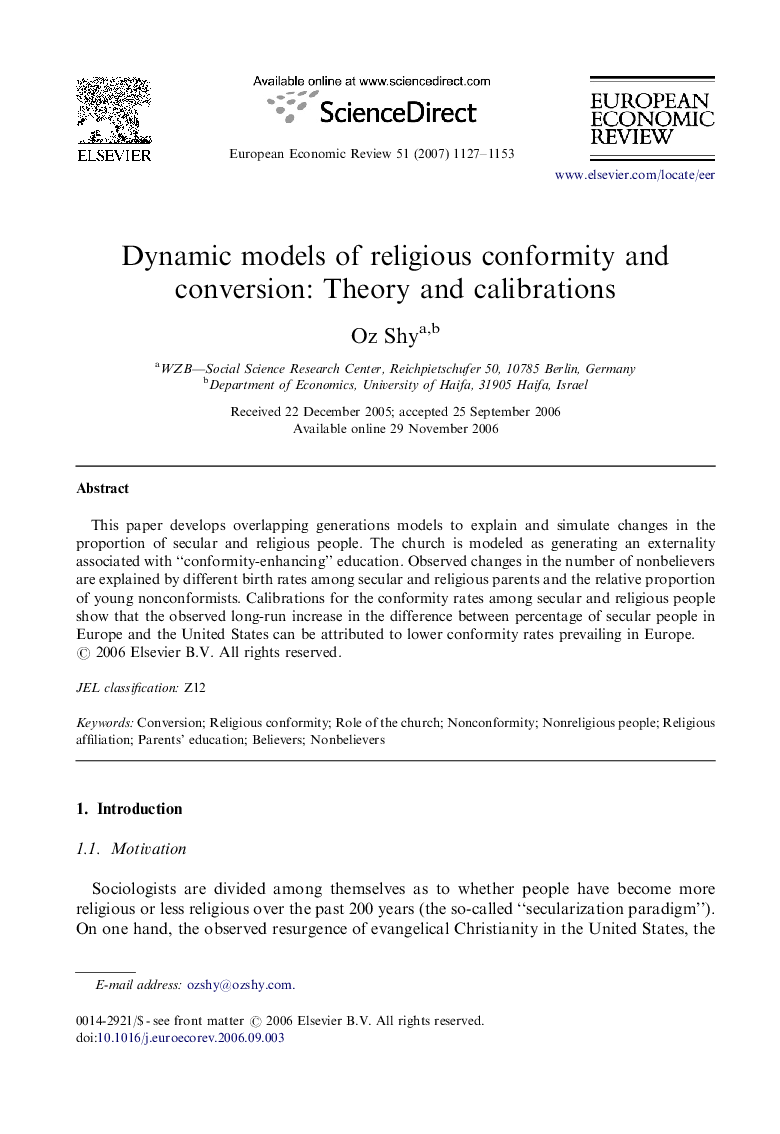| Article ID | Journal | Published Year | Pages | File Type |
|---|---|---|---|---|
| 5067345 | European Economic Review | 2007 | 27 Pages |
Abstract
This paper develops overlapping generations models to explain and simulate changes in the proportion of secular and religious people. The church is modeled as generating an externality associated with “conformity-enhancing” education. Observed changes in the number of nonbelievers are explained by different birth rates among secular and religious parents and the relative proportion of young nonconformists. Calibrations for the conformity rates among secular and religious people show that the observed long-run increase in the difference between percentage of secular people in Europe and the United States can be attributed to lower conformity rates prevailing in Europe.
Keywords
Related Topics
Social Sciences and Humanities
Economics, Econometrics and Finance
Economics and Econometrics
Authors
Oz Shy,
